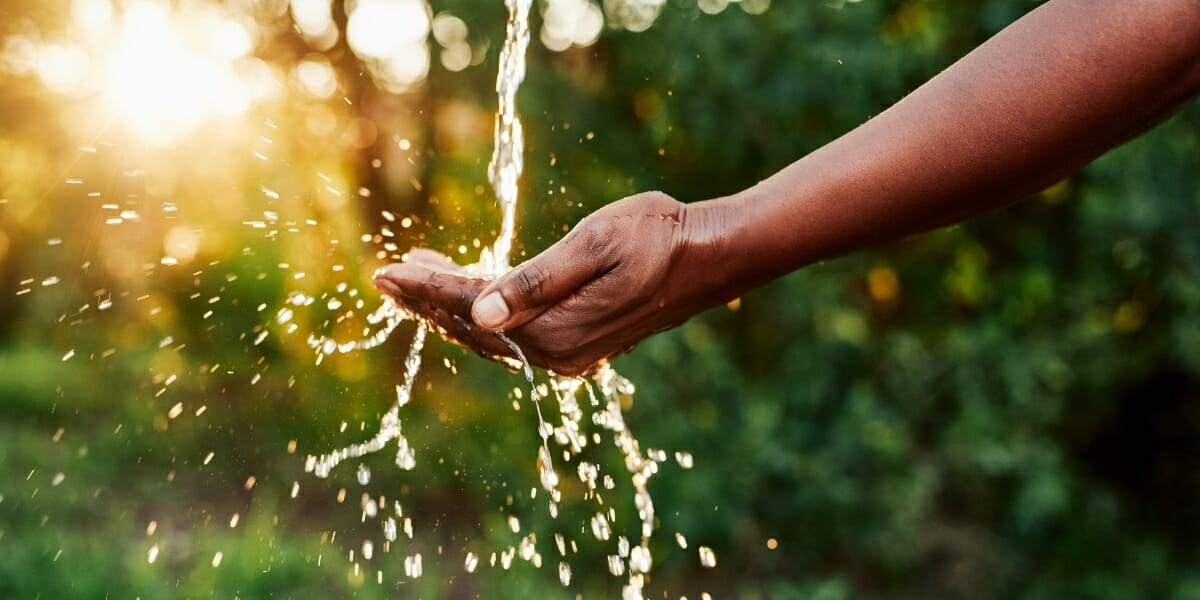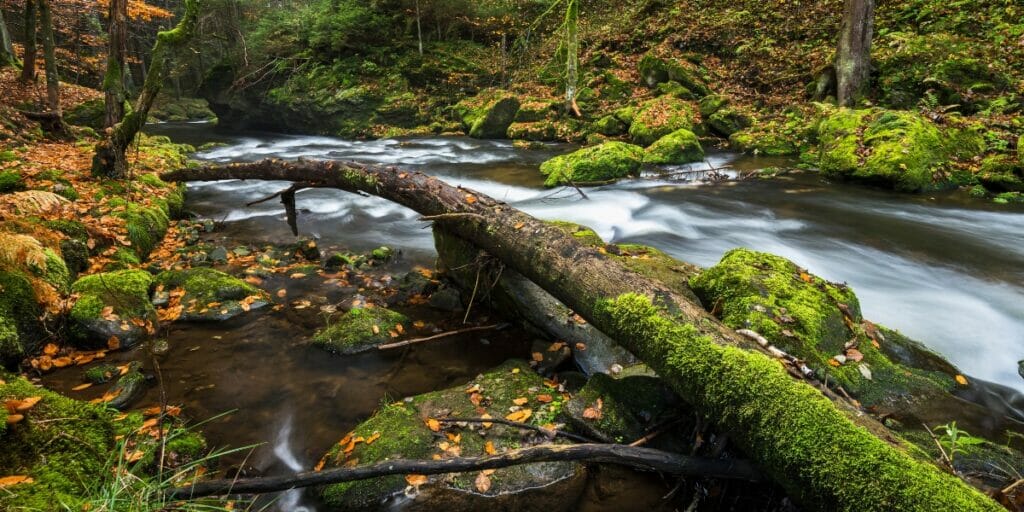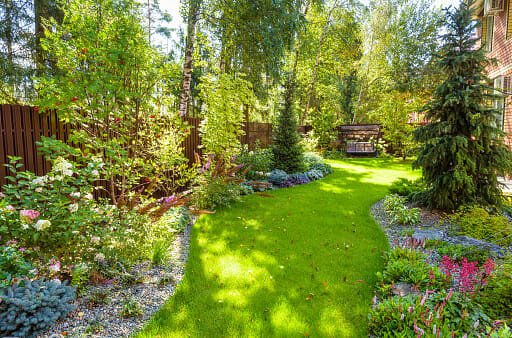Regenerative landscapes offer a multitude of benefits that go beyond mere aesthetics. By implementing sustainable practices, these landscapes contribute to water conservation, improved soil health, enhanced biodiversity, and the creation of wildlife habitats.
Additionally, regenerative landscapes require reduced maintenance, making them a practical and efficient choice for those seeking control and long-term solutions.
In this article, we will delve into the evidence-based advantages of regenerative landscapes, providing valuable insights for those interested in transforming their outdoor spaces.
Key Takeaways
– Water Conservation: Regenerative landscapes promote efficient use of irrigation systems, rainwater harvesting, and reducing evaporation, leading to optimal water usage and decreased reliance on freshwater sources.
– Improved Soil Health: By focusing on soil fertility through organic matter, avoiding synthetic fertilizers and chemical pesticides, and incorporating carbon sequestration practices, regenerative landscapes enhance soil health and promote a balanced soil ecosystem.
– Biodiversity Enhancement: Regenerative landscapes create habitats through diverse plants, trees, and water features, promoting native species adapted to the local environment and restoring natural balance and resources for organisms, leading to a greater variety of species.
– Wildlife Habitat Creation: Regenerative landscapes protect and restore natural habitats, create new wildlife habitats through strategic planning, and incorporate native plants and features like birdhouses and ponds, attracting and supporting diverse wildlife species.

Water Conservation
One of the key aspects of water conservation in regenerative landscapes is the efficient use of irrigation systems. By implementing smart irrigation techniques, such as drip irrigation or using weather-based controllers, water can be applied directly to the roots of plants, reducing evaporation and ensuring that only the necessary amount of water is used.
Additionally, rainwater harvesting plays a crucial role in water conservation. By collecting rainwater from rooftops or other surfaces, it can be stored and used for irrigation purposes during dry periods, reducing the reliance on freshwater sources.
Another effective strategy is the use of drought-resistant plants. These plants have evolved to thrive in arid conditions and require minimal water, making them ideal for regenerative landscapes.
Improved Soil Health
The improved soil health in regenerative landscapes is achieved through the implementation of various sustainable practices and techniques. One of the key factors contributing to enhanced soil health is the focus on soil fertility. Regenerative landscapes prioritize the use of organic matter, such as compost and cover crops, to replenish nutrients and support the growth of healthy plants. By avoiding the use of synthetic fertilizers and chemical pesticides, these landscapes promote a more balanced soil ecosystem.
Additionally, regenerative landscapes play a crucial role in carbon sequestration. Healthy soils act as a carbon sink, absorbing and storing carbon dioxide from the atmosphere. Through practices like crop rotation, reduced tillage, and the incorporation of perennial plants, regenerative landscapes increase organic matter in the soil, leading to higher carbon sequestration rates.
Biodiversity Enhancement
Many regenerative landscapes actively promote and conserve biodiversity through the implementation of sustainable practices and the creation of diverse habitats. By focusing on ecosystem restoration and enhancing ecological resilience, these landscapes contribute to the protection and proliferation of various species.
Here are three key ways in which regenerative landscapes enhance biodiversity:
1. Habitat creation: Regenerative landscapes incorporate a variety of plants, trees, and water features that create diverse habitats for different species. This includes providing nesting sites, food sources, and shelter for wildlife.
2. Native species promotion: Regenerative landscapes prioritize the use of native plants and trees, which are well-adapted to the local environment and support the native wildlife. By planting native species, these landscapes help restore the natural balance and provide resources for a wide range of organisms.
3. Minimizing disturbance: Regenerative landscapes aim to minimize human disturbance and maintain natural processes. By reducing chemical inputs, preserving natural water systems, and avoiding excessive development, these landscapes allow ecosystems to thrive and support a greater variety of species.
Wildlife Habitat Creation
Through careful planning and strategic implementation, regenerative landscapes not only protect and restore natural habitats, but also create new wildlife habitats for various species to thrive.
Ecological restoration and sustainable landscaping practices play a crucial role in the creation of wildlife habitats within these landscapes. By incorporating native plants, providing food and water sources, and creating shelter, regenerative landscapes can attract and support a diverse range of wildlife species.
Native plants not only provide food and shelter for local wildlife but also promote pollination and seed dispersal, contributing to the overall health and diversity of the ecosystem.
Additionally, features such as birdhouses, bat boxes, and ponds can further enhance wildlife habitat creation.

Reduced Maintenance Requirements
By implementing regenerative landscapes, individuals can experience both decreased maintenance needs and increased environmental benefits.
Here are three ways regenerative landscapes can reduce maintenance requirements:
1. Low Cost Options: Regenerative landscapes often incorporate native plants that are well-adapted to the local environment. These plants require less water, fertilizer, and pesticides compared to exotic species. By choosing native plants, homeowners can save money on maintenance costs while still enjoying a beautiful and vibrant landscape.
2. Time Savings: Regenerative landscapes are designed to be self-sustaining and require minimal upkeep. With proper planning and design, homeowners can reduce the need for mowing, pruning, and other time-consuming tasks. This allows individuals to spend more time enjoying their outdoor spaces instead of constantly maintaining them.
3. Natural Ecosystem Services: By creating regenerative landscapes, individuals can take advantage of the natural processes that occur in healthy ecosystems. For example, incorporating rain gardens and bioswales can help capture and filter stormwater runoff, reducing the need for irrigation and minimizing erosion. These natural ecosystem services not only reduce maintenance requirements but also contribute to a healthier environment.
Frequently Asked Questions
How Can Regenerative Landscapes Contribute to Climate Change Mitigation?
Regenerative landscapes, through practices such as regenerative agriculture, can contribute to climate change mitigation by promoting carbon sequestration. These methods harness the power of natural processes to restore ecosystems and enhance their ability to capture and store carbon dioxide from the atmosphere.
Are There Any Financial Incentives or Government Programs Available to Support the Implementation of Regenerative Landscapes?
Financial incentives and government programs play a crucial role in supporting the implementation of regenerative landscapes. These incentives can include tax credits, grants, and subsidies, while government programs provide technical assistance, education, and funding opportunities for individuals and organizations.
Can Regenerative Landscapes Help Reduce the Risk of Soil Erosion?
Regenerative landscapes, through the practice of regenerative agriculture, can play a crucial role in reducing the risk of soil erosion. Techniques such as cover cropping, contour plowing, and rotational grazing can enhance soil conservation and promote long-term sustainability.
What Are Some Innovative Techniques or Technologies Used in Regenerative Landscapes?
Innovative techniques and cutting-edge technologies are being used in regenerative landscapes to enhance sustainability and restore ecosystems. These approaches focus on soil health, water management, biodiversity conservation, and carbon sequestration, among others, to achieve long-term environmental and social benefits.
Are There Any Specific Plants or Species That Are Commonly Used in Regenerative Landscapes to Enhance Biodiversity?
Commonly used plants or species in regenerative landscapes can significantly enhance biodiversity. These plants provide habitat and food sources for various wildlife species, increase pollination and seed dispersal, improve soil health, and enhance ecosystem resilience and stability. The benefits of biodiversity in regenerative landscapes are numerous and include improved ecosystem services, increased productivity, enhanced carbon sequestration, and greater resilience to climate change and other disturbances.
Conclusion
In conclusion, regenerative landscapes offer numerous benefits, including:
– Water conservation
– Improved soil health
– Biodiversity enhancement
– Wildlife habitat creation
– Reduced maintenance requirements
These landscapes have the potential to:
– Address environmental challenges
– Provide ecological solutions
– Promote sustainable practices
By implementing regenerative landscapes, we can create a more resilient and harmonious environment that:
– Supports diverse ecosystems
– Contributes to the overall well-being of our planet.



